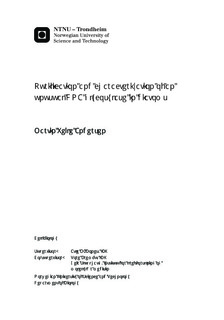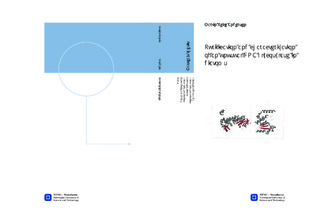| dc.description.abstract | DNA damage may be caused by many different agents, including radiation, spontaneous mutations and chemical mutagens. If the damage is left unrepaired, it may result in mutations or cell death. All organisms contain repair system to repair these damages. The mechanism that is believed to be the most common is base excision repair (BER). The BER pathway is initiated by enzymes called DNA glycosylases, which recognize and remove modified or misincorporated bases. Studies of the sequenced genome of the two diatoms Thalassiosira pseudonana and Phaeodactylum tricornutum have shown that they have an unusual DNA glycosylase. The glycosylase has been named Dual DNA glycosylase and has only been found in diatom genomes. DDG contain an N-terminal NEIL (endonuclease VIII/Nei like) domain and a C-terminal UNG (Uracil N-glycosylase) domain, connected with a linker region. DDG has later been found in the pennate diatoms Fragilariopsis cylindrus and Seminavis robusta, suggesting that DDG is a diatom-specific protein. cDNA clones encoding the FL (full-length) P. tricornutum DDG as well as the single NEIL domain and UNG domain were cloned into the expression vector P-BADM-30, which contains both a histidine-tag and a glutathion S-transferase (GST)-tag for affinity purification. The clones were verified by sequencing and transformed into Escerichia coli ArcticExpress RIL cells. The ArcticExpress cells are modified for fusion protein expression. The expression of fusion proteins was optimized by induction time, temperature and inducer concentration. Expressed proteins were purified by the use of both histidin tag and GST tag columns, and verified by MALDI-TOF analysis. Purified recombinant PtDDG-FL was used in UDG activity assay analysis to determine activity optimum. The pH optimum was found to be at pH 8, NaCl optimum at 125 mM, MgCl2 optimum at 8 mM MgCl2 and the temperature optimum at 45°C. PtDDG-FL substrate preference was found to be in the order of ssU>U:G>U:A. The thermal stability of PtDDG-FL at its optimum temperature was found to be low in comparison to human UNG2. The Km and Kcat values of PtDDG-FL against double-stranded uracil-containing DNA were 0.64 μM and 3.3 min-1, respectively. The corresponding values for the nuclear human UNG2 enzyme are 3.0 μM and 187 min-1, respectively. | nb_NO |

